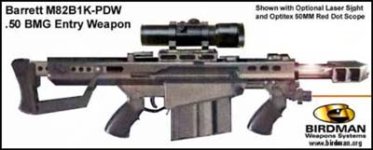oh brother...
All of the M14/M1 Garand folks here remind me of the debates from last decade on the retirement of the battleships in the Navy.
There is also much disinformation being spread. The twist rate has very little to do with the tumbling. For the M193 or M855 to be stable in flesh, the twist rate would have to on the order of several turns per inch, not several inches per turn. All FMJ bullets tumble eventually upon impact; shorter ones like the M193 and M855 do it quicker. Going to a larger caliber with a longer bullet would decrease the effectiveness.
One more question: What battles have US armed forces fought where the M16A2 was inadequate? In Somalia, even the 7.62 X 51 sniper rifles were having problems.
All of the M14/M1 Garand folks here remind me of the debates from last decade on the retirement of the battleships in the Navy.
There is also much disinformation being spread. The twist rate has very little to do with the tumbling. For the M193 or M855 to be stable in flesh, the twist rate would have to on the order of several turns per inch, not several inches per turn. All FMJ bullets tumble eventually upon impact; shorter ones like the M193 and M855 do it quicker. Going to a larger caliber with a longer bullet would decrease the effectiveness.
One more question: What battles have US armed forces fought where the M16A2 was inadequate? In Somalia, even the 7.62 X 51 sniper rifles were having problems.



